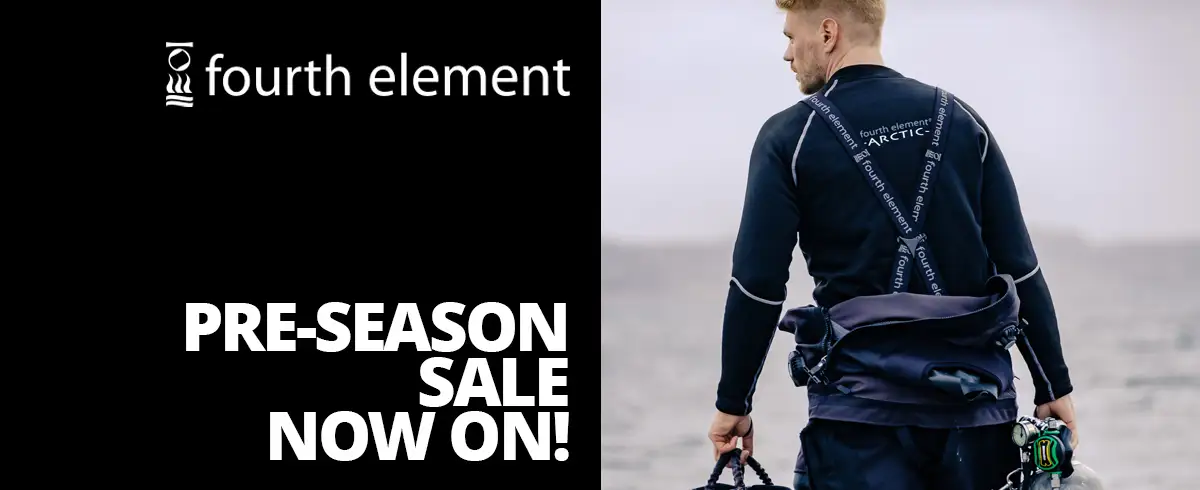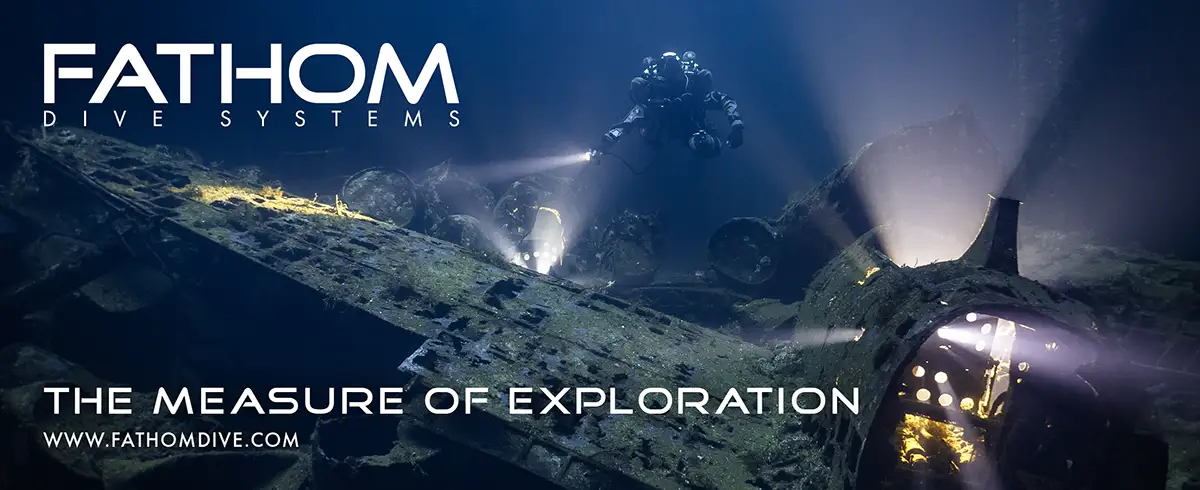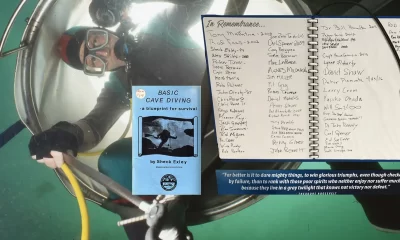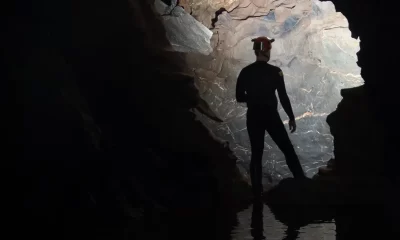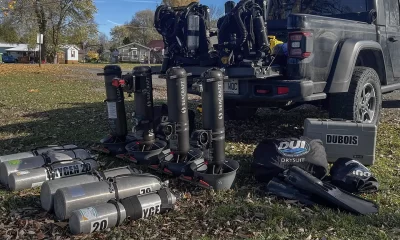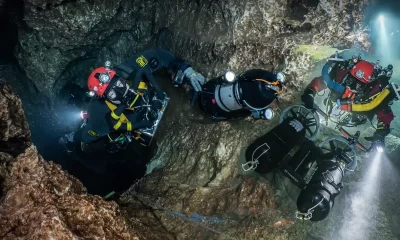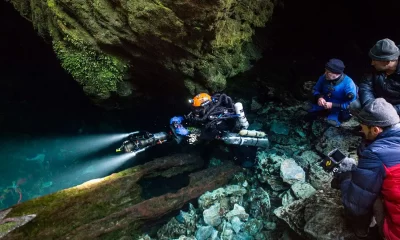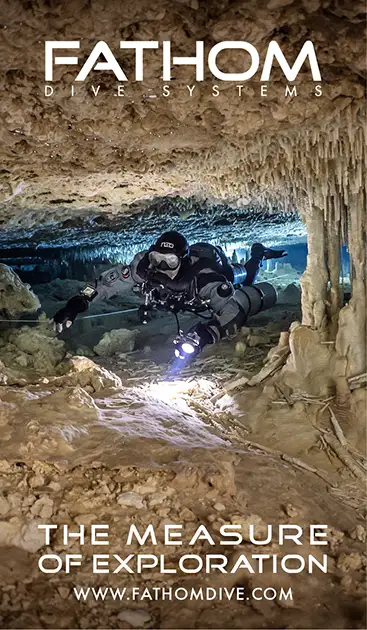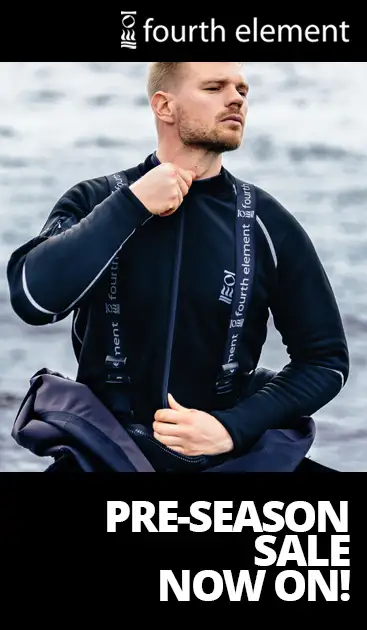Cave
Cozumel Underground
We offer a short blast from the past, circa 1997, detailing some of the first cave dives on the island, and the people that helped put the Cozumel underground on the map.
by Michael Menduno
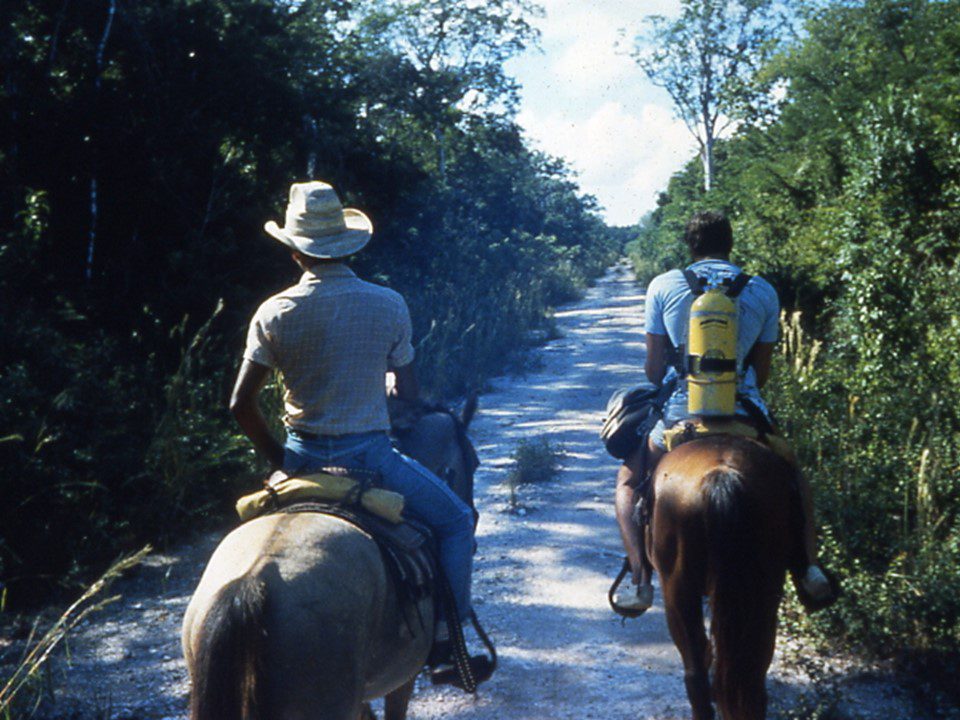
Please note that this story was written in 1997.
Cozumel, Mexico—While the race to stake-out the world’s longest underwater cave marches on beneath the Yucatan jungle, a handful of explorers have been quietly plumbing the depths of some of the most unique fresh-water caves in Mexico, less than an hour’s run away. The trouble is, no one believes that they’re there.
Thirty-nine year old financial consultant Jeff Bozanic has found it hard to convince others that there are caves in Cozumel. Over the years, Bozanic, who has been exploring the island’s cenotes for more than a decade, has learned to keep his mouth shut.
While attending an international cave diving workshop in Cozumel, Bozanic followed his instincts and shelled out fifty bucks for a jungle horseback ride to check out the mud-red cenote described on a hotel flier. Getting off at the sinkhole, Bozanic stripped to his briefs, strapped on the make-shift fifty that he cajoled the guide to carry, and slipped into the dark tannic water. Local Mayans thought it was only six feet deep. But they weren’t cave divers. Bozanic descended through the blackness for what seemed like minutes, broke out into clear water at 60 feet, and tied off his safety reel at the top of the large stalactite.
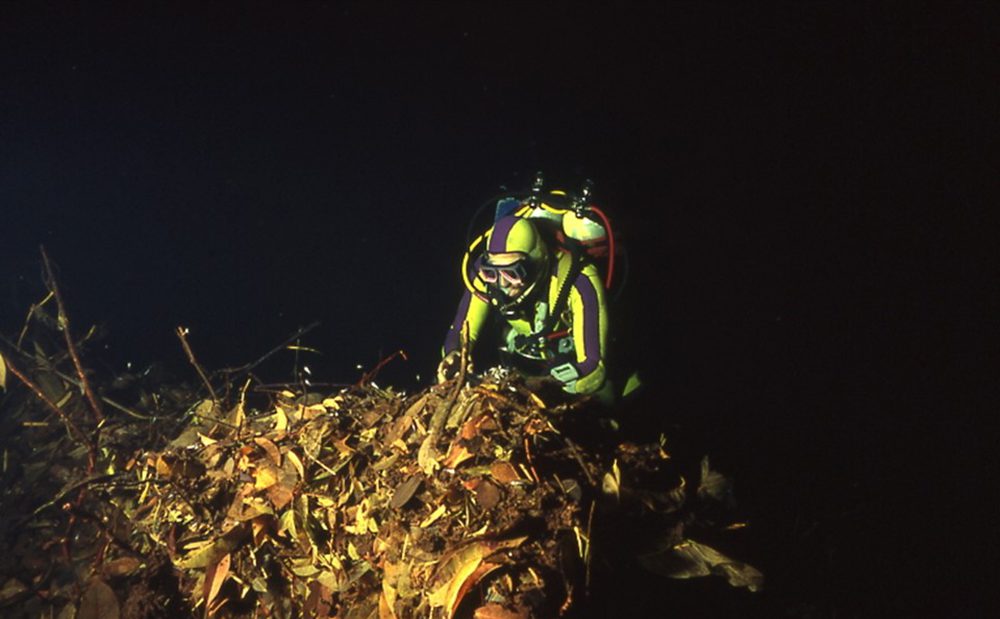
“I hit 120 to 130 feet on that first dive at Xcan Ha, and collected a shrimp and an amphipod,” recalls Bozanic. “The amazing thing was that when I got back and told others what I’d found, no one would believe me.” A hundred and twenty feet deep? At the time, the deepest Yucatan caves were less than sixty.
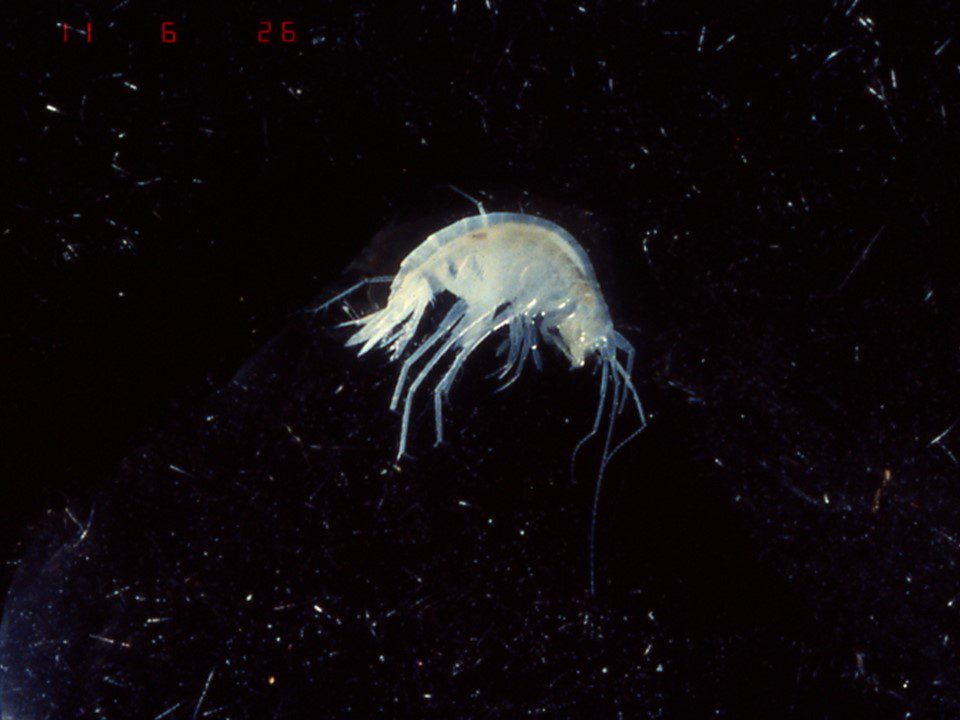
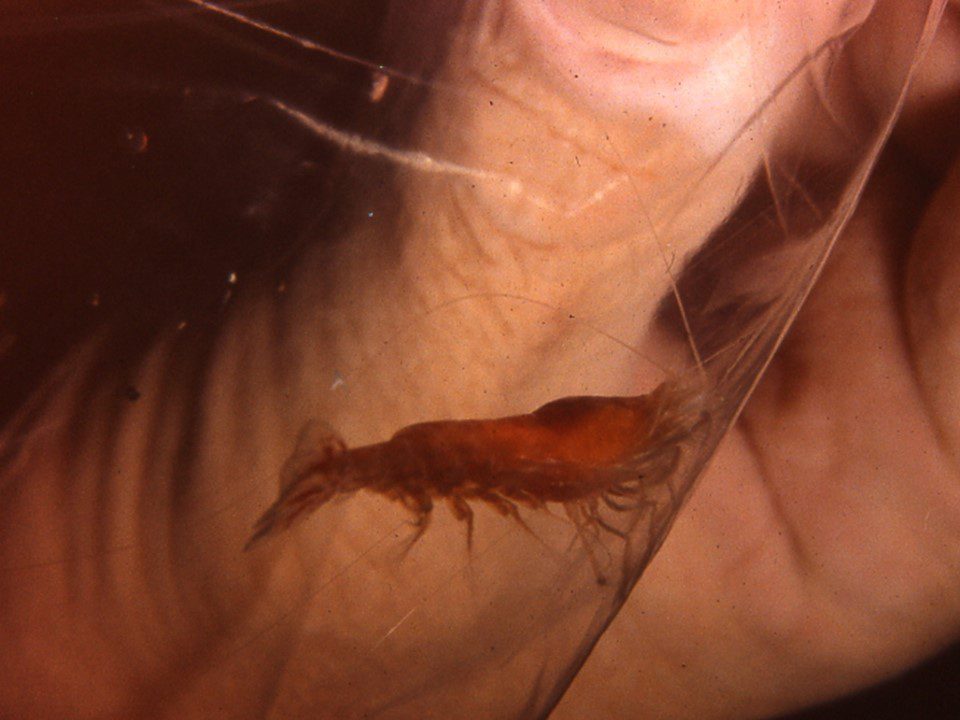
The year was 1987; five years before the term, “tech diver,” was even invented. The sixty- to seventy-odd speleo-brethren who attended the New Frontier, “Exploring The New Frontier” organized by the late Parker Turner, were jonesing to explore the gargantuan systems being discovered across the channel in the Yucatan—the new underground Mecca. Only a handful of cavers would ever know, or care, that the specimens that Bozanic had collected turned out to be two new species; the first of more than fifteen that he and his cohorts would discover on the island.
Bozanic and company put Cozumel cave diving on the map three years earlier when he noticed a fresh-water halocline while beach diving with his sister off Chankanaab park and followed it back to its source. Two months later, Bozanic and fellow speleo-phile Dennis Williams returned for a week to survey Cueva Quebrada.
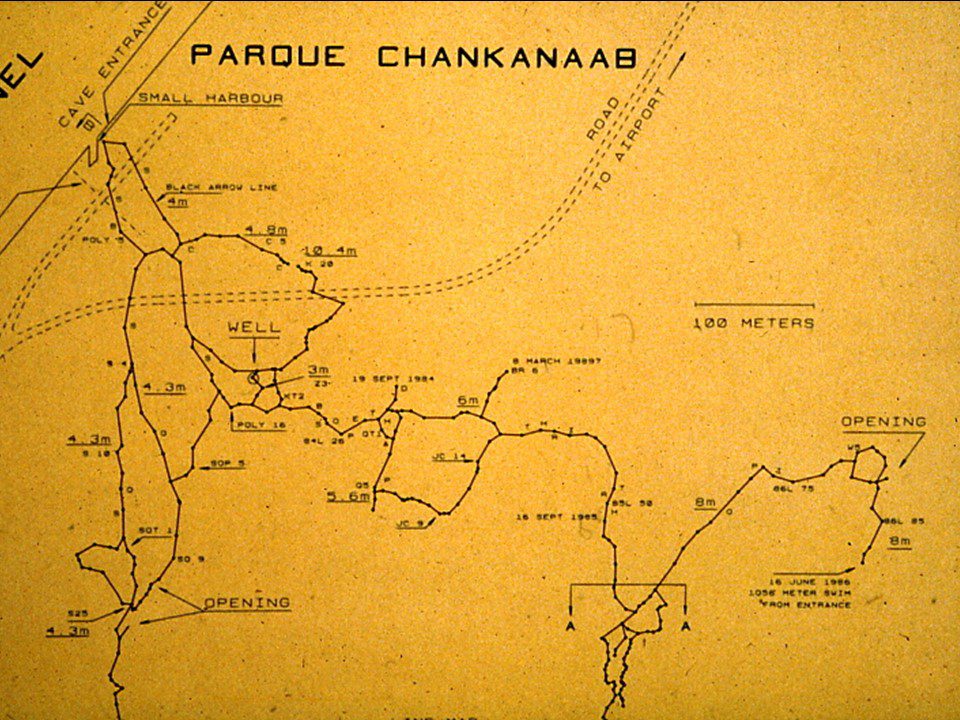
“We found thousands of feet of line in the first four hundred feet of cave, if you can believe it—everything from monofilament to clothesline,” recalls Bozanic, who’s considered one of the greybeards in the field. His last dive at Quebrada, required three aluminum eighties in addition to his back-mounted doubles, and lasted almost five hours. Today Quebrada, is the longest of six major caves on the island, boasting nearly six miles of underwater passage.
On to Aerolito
Having road-rigged two sets of dual independent eighties, Yucatan explorer/instructor Steve Gerrard and I make our way past the four-foot high mound of refuse, empty cerveza bottles and a used pink condom—a local tribute to environmental awareness. Negotiating the slippery embankment, we slide into the emerald green cenote where our guide, Chuck Jones, is adjusting his head-lights. It’s the first time that either Gerrard or myself have cave dived in Cozumel.
We take turns leaning back in the 72° F water for a bubble-check. I’m fizzing—one of my DIN adapters is refusing to mate with the Dali-esque valve on my battered Cozumel renta-tank leaving a tell-tale bubble trail. Jones peels off an o-ring from his watch band, and proceeds to save my dive while launching into his briefing. You can tell he’s done this before.
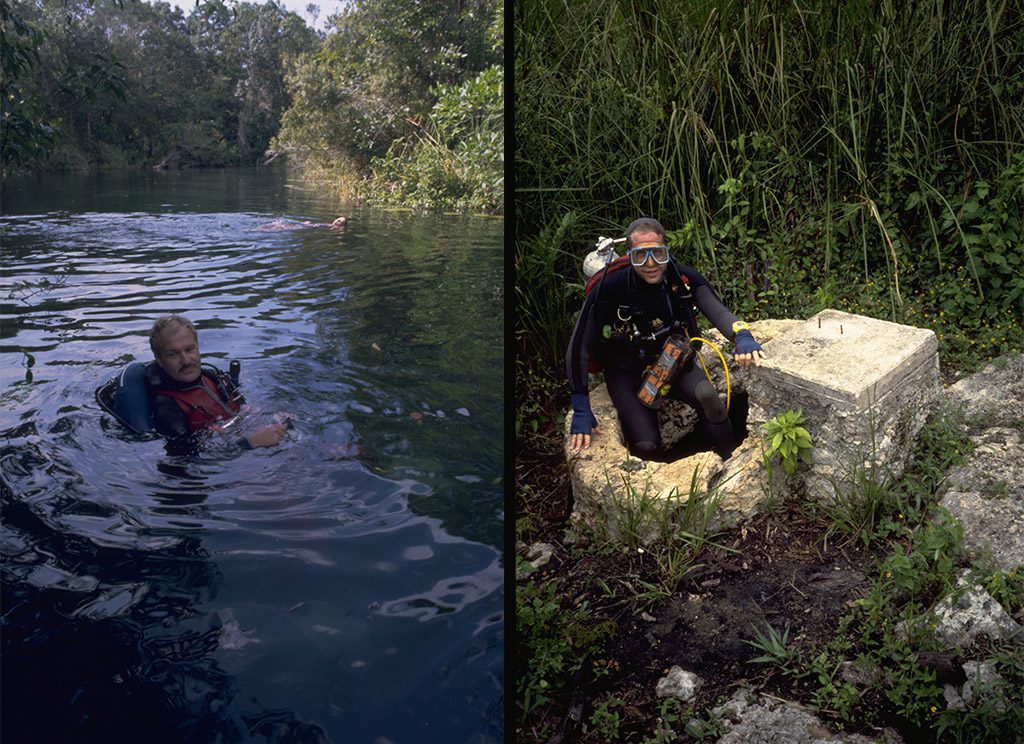
Located near Caleta Marina, in the area slated for the ‘reef-eating’ cruise ship pier and more shopping malls, “Aerolito de Paradiso,” is one of the most “bio-active” caves on the island, with more than 20,000 feet of surveyed passage from thirty to over 100 feet deep. Like the nearby reef, its future is clouded by possible development.
Underground film-maker Wes Skiles was the first to map out the cave for a hydrology report in 1986. Five years later, Jones started swimming the system, and added nearly 3000 feet of line. Our goal today is to make the half-hour swim to the Dome Room, a huge water-filled chamber, 350 feet in diameter, eighty feet from ceiling to floor, about 1600 feet back in the cave. Bubbles in check, Jones finishes the briefing and we submerge.
Chuck Jones is a member of the Cozumel underground in good standing. A computer nerd by trade, diver by avocation, Jones first dived Cozumel in the seventies, and then moved to the island nine years ago. His friends thought he was nuts.
Like cave diving, making a living in the dive business is a matter of survival. Jones survived in order to feed his passion for virgin passage. This year, in response to cyber-island economics, Jones decided to go into business for himself, and put Cozumel on the net.
Like Bozanic, the forty-five-year-old Jones can attest to the unique hazards of Cozumel cave diving. Last summer, he and five other volunteers got caught in a Mexican cross-fire between the Federalies and local Institute for Nautical Anthropology and History (INAH) officials while recovering submerged Mayan pottery under the supervision of a museum archeologist.
The cenote was slated to be buried under a local housing project.
For their efforts, Jones spent four days in jail before the Mexican court determined that INAH hadn’t done the proper paperwork. Jones and the others were released only to be flamed on the net by state-side cavers who didn’t know the whole story. Retorts Jones, “Cave diving community is an oxymoron. I still do cave and cavern tours and teach, but these days I watch my back.”
Dome Room logged, Gerrard, Jones, and I finished debriefing over a three dollar dinner with sangria, at a neighborhood eatery. If the price didn’t give away the local nature of the establishment, the three brightly-painted young ladies of the night having their breakfast at the table next to us, did.
Jones recently got back from his first fly over the island paradise to scout out new cenotes. “Talk about information overload, I was bowled over. I had two cameras, one with a 70 mm lens, and couldn’t shoot film fast enough, reports Jones. “ All I can say is that there are a lot of cenotes on this island.” And no one even knows that they’re there.
Jones is emphatic, “We need more cave divers; it’s the only way to create the pressure to find more caves.”
And protect the ones that are there.
Return to main story: Laying Line in Cozumel
DIVE DEEPER
aquaCORPS Archives: The race to claim the world’s longest underwater cave was in full swing pitting two groups of Yucatan explorers against each other in Dos Nohoch No Dos Ojos You Are My Baby by Michael Menduno and Dean Mullaney
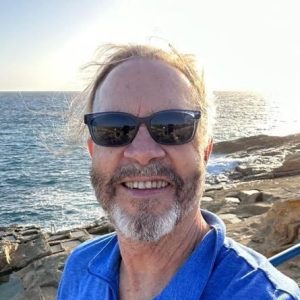
Michael Menduno/M2 is InDepth’s editor-in-chief and an award-winning journalist and technologist who has written about diving and diving technology for more than 30 years. He coined the term “technical diving.” His magazine “aquaCORPS: The Journal for Technical Diving” (1990-1996) helped usher tech diving into mainstream sports diving, and he produced the first tek.Conferences and Rebreather Forums 1.0 & 2.0. In addition to InDepth, Menduno serves as an editor/reporter for DAN Europe’s Alert Diver magazine, a contributing editor for X-Ray mag, and writes for DeeperBlue.com. He is on the board of the Historical Diving Society (USA), and a member of the Rebreather Training Council.






